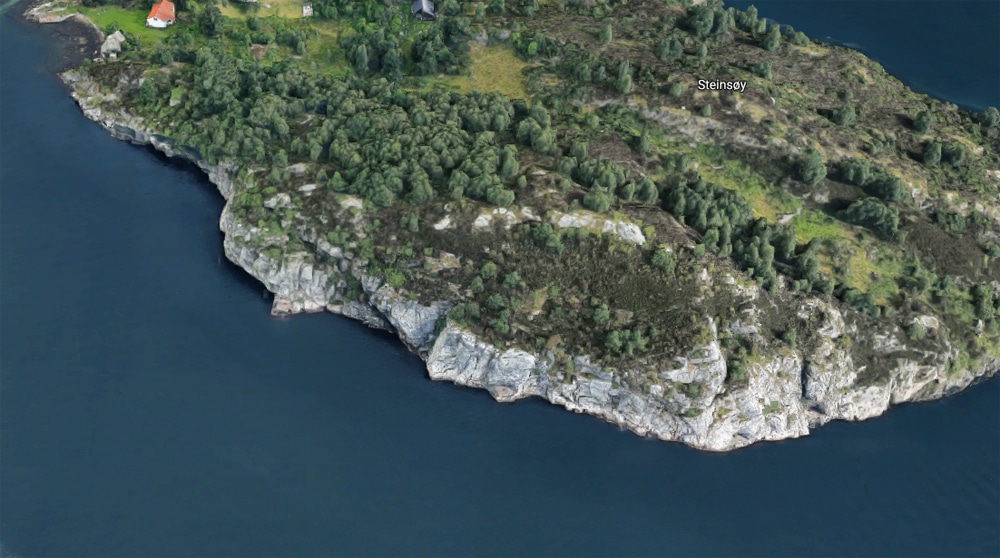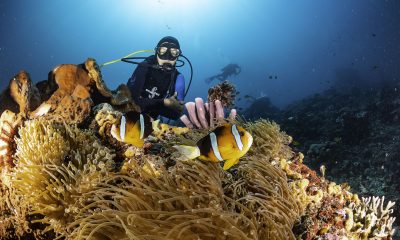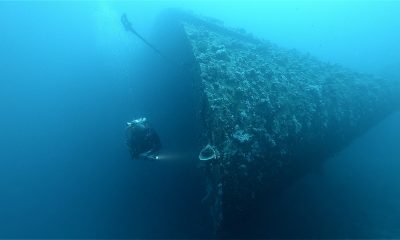News
Wreck & Decompression Diving In Norway

Our Technical Diving Editor, Olivier van Overbeek, writes about his recent trip to Norway to work with RAID Norway…
With 2 black ex MOD black 100L deployment bags filled with anything a traveling technical diver could possibly want, I make my way to the airport. Where am I going? I’m heading to Stavanger, Norway’s third biggest city also known as their oil capital due to the high degree of oil companies based there. When you think about diving Norway you think Baltic, going deep North, deep and cold, big wrecks, you think Narvic, not really Stavanger….but there is plenty to see!
I’m traveling to support RAID Norway and spend some time with the local RAID members ensuring they get the progression wanted and required. As my travels are rarely boring, this one would prove to be no exception. The flight is a two part journey with a stop in Oslo, well Oslo is a fairly big airport, and I had to run to make the connecting flight…….clearly my bags weren’t so fortunate and didn’t arrive till the next morning, connection times of sub an hour are not quite realistic.
My hotel, quite novel, is in a hospital; apparently this is normal and allows for patients who wish to stay close or for observation to stay near the hospital without taking up beds. The lobby was a gift shop slash restaurant, and the bed wasn’t made, you have to do this yourself you see! But the rates, so I’m told are friendly. I was soon to find out that the definition of friendly rates in Norway is what we would consider rather expensive.
Stavanger has two dive shops, and plenty of dive clubs. The club atmosphere is very strong here and most clubs seem to have a boat; the landscape lends itself for boating very well as there is water pretty much everywhere you look. We used both shops during this trip. The first was more recreationally oriented, and quickly ran out of gas pretty quickly; the second specialises in technical diving and had an extensive gas bank and blending setup, which very much suited our needs. The offer on high-end technical equipment is very limited, and I was told you only get this in Oslo. The local divers found it hard to get the right equipment in their hands. Dive gear, like most other things in Norway, is horrendously expensive, but not quite as expensive as buying a round of beer; I had to learn that the hard way!
Now the first thing you’ll notice is the landscape: it’s stunning, the height differences are acute, topside as well us under the water.
We started training in what at first looked like a lake, but was actually an inlet from the sea. The site was based around a local area communal clubhouse and we had a sandy entrance and thus a nice confined site that would slope down to about 20m which very much suited some of the initial progression. On the other side of the building a rocky entrance, which the UK HSE would have a field day with, would lead to a short swim and a fairly rapid drop to about 30 odd meters.
After our initial training was done we migrated to a different site, mostly because the entrance wasn’t safe enough and we didn’t want any twisted ankles or worse mid-course.
We head out of the main town and into the countryside, a place called Dale, an abandoned psych hospital, that according to locals knows some rather gruesome and experimental past. The waterside is breathtaking. We look out over the fjord and on the other side see the main city; it can be noted that some of the industrial buildings are being taken down and replaced with apartments. One of the students tells me that they build the legs for a famous oil platform here. Apparently they lay at the bottom. I ask him how deep it is, he’s not sure… deep; everyone laughs. I have my doubts that we are going to hit the desired depth as I can see the other side. How deep can it be? As the team is getting ready for the first dive some banter is had in Norwegian; divers are divers and there is always time for banter it seems.
We descend down a pipe we’ve spotted in the dirt, and our target is 40m of depth. I’ve planned some problems and failures on the way up. The viz initially is nothing spectacular, but after we pass 35m it becomes crystal clear, super cold and dark. At 40m there is a ledge, and as we peer over the ledge all we see is black, pitch black. I shine my torch down it, but just see nothing. I remember thinking, this must be deep. I consult some maps later that day and discover that the fjord is 260m deep!
As our course is shaping up nicely and the students are getting to grips with team ascents, gas sharing, shutdowns and everything in between, they are starting to work together, and start realizing life underwater is easier with someone hovering in front of you. This means we finally can start hitting some of the wrecks!
The local RAID instructor who’s assisted me in planning this trip tells me there is a wreck directly opposite to where we’ve been doing the confined training the first two days, but we can’t swim there as it’s too far, and we have to pass a fairly active shipping lane. As we don’t have scooters we decide to hire a boat and drop directly on it. We hit the wreck pretty much dead on, and a few of the team members get a go at leading the dive and ascent. The wreck appears to be an old ferry, and is in remarkably good condition. On the second dive we explore the surroundings a bit more and find plenty of other random wreckage and rust to explore.
A post dive discussion takes place about what other wrecks could be down there, do we want to dive the same site, or do we want to drive a bit further to hit something more guaranteed. The guys talk to the owner of the tech dive shop, and he hints towards a second wreck being there; we decide to go and find it and it’s an old barge laying halfway up the bank. It’s just so exciting to dive something real on a course and have a level of exploration intertwined with it; it really shows the students why they are training.
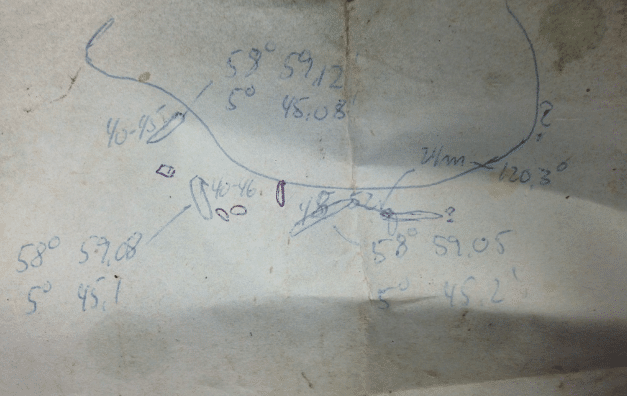
While back at the shop getting our Trimix fills that evening I spot a piece of paper laying on the desk of the shop owner. I quickly take a shot, it appeared to be the same site, and had various co-ordinates on it and little drawings. I comment on these great shots he has on his computer as a screen saver and try to see what information I can get out of him. He lets slip that there is a German Schnellboot and a Uboot in that area. The Schnellboot bottoms out at 55-60m, and given that we are on a 50m deco course that gives us plenty of room to play with. So the next morning I break it to the guys – last dive of the course, no skills other than those that are created by poor decisions, in other words, dive well and get rewarded. We discuss what the best way of finding the wreck would be, and I volunteer myself to take the lead as long as one of the students take control of the ascent and way back up to our boat.

As soon as we go down I realize the map was inaccurate; we have gone down much closer to the first wreck than I wanted to and we will have limited time to find this wreck. As I adjust our direction and put on the fin power we start swimming past some of the features and landmarks I was expecting to see making me feel hopeful we are gonna hit the Schnellboot. I sense the nervousness in the team as we are swimming further from our ascent point and deeper into the fjord, and then we see it, the bow of the vessel standing proud on the sea bed. Our swim speed slows and we have enough time left to do a full lap of the wreck.
As we hadn’t anticipated the level of darkness we can’t fully appreciate the wreck, but one thing is for sure, I need to come back here and look inside it and around it more; the wreck is stunning and would make for a great subject for some photography, but alas we have to go to stick to our runtime. With smiles on their faces they start their ascent, perfectly I might add. As we finish our time at 6m I congratulate them all underwater for doing a stellar job.
On the way back to shore I feel sad. I’ve had such a great week, met some amazing people, turned them into amazing divers, and I can’t help but feel a bit jealous on how nice their sea is, and how accessible it is, knowing that soon I’ll be back in a quarry teaching and craving the clear, calm Norwegian waters.
As I travel back, this time via Denmark, my layover time is equally idiotic, and low and behold, my bags are lost again…. The baggage company tells me never to book flights with layover times less than an hour if I don’t want to lose my bags. OK, well that’s a new one, but lesson learned.
As I arrive back in Manchester I already look forward to my next trip in January which will be another 50m course and a 60m course. This time I’ll bring some big lights and video equipment with me to capture some of the underwater splendour that Norway has to offer.
Blogs
Join Pharaoh Dive Club for Red Sea Splash Family Summer Camp in August 2024
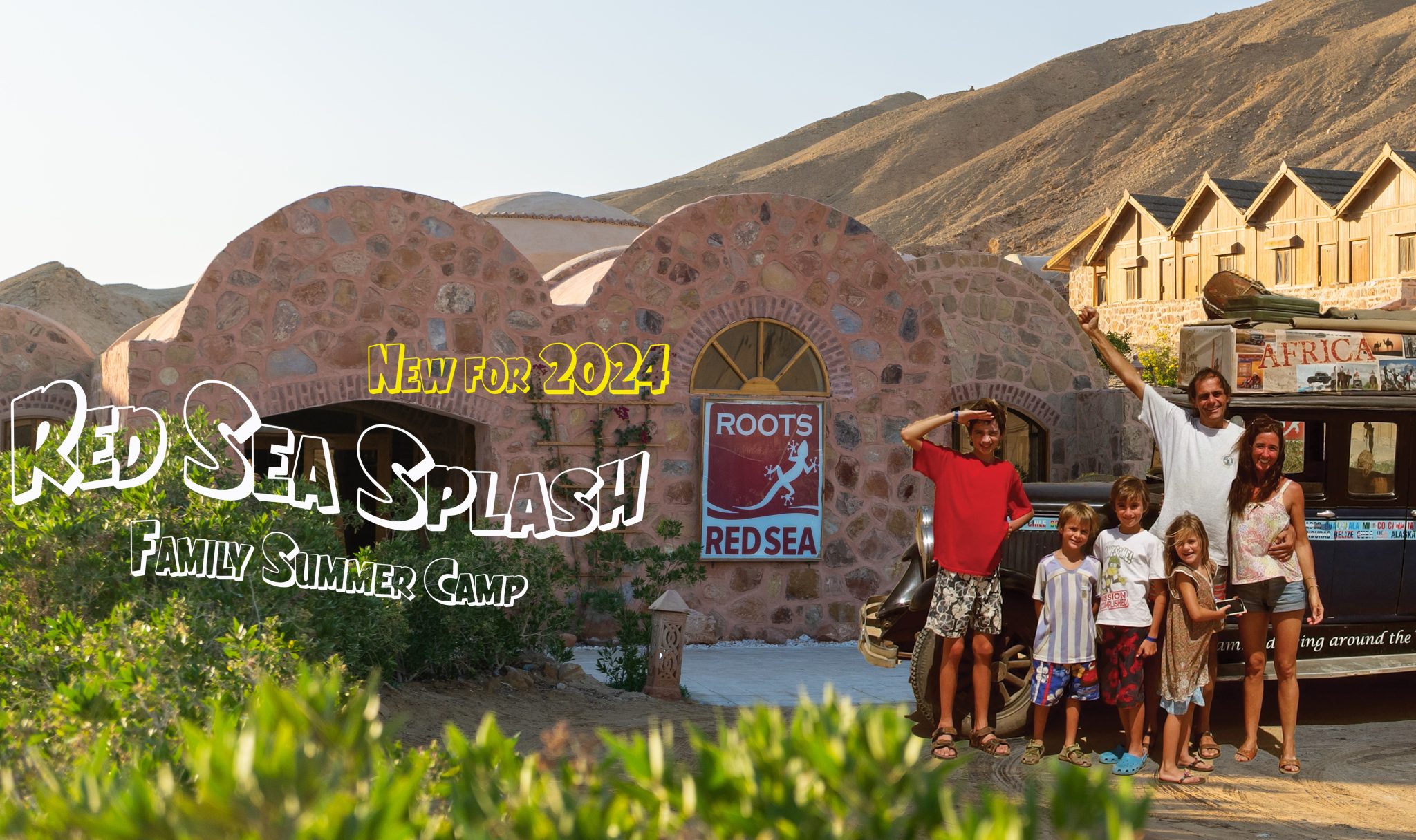
3rd AUGUST 2024 – 1 or 2 WEEK PROGRAMMES
Daily water programme with Snorkelling & Scuba Diving.
Beginners or qualified, something for all.
Leave the kids with the Splash Team for days of Excitement, Fun & Adventure!

BOOK NOW: INFO@PHARAOHDIVECLUB.COM / TEL: +44 7598 329059 or +20 100 6822000
There are various options for accommodation with options for 2, 3, 4 or 5 guests.
Eco Huts provide accommodation for families of up to 4. The best option to enhance the adventure and closest to camping with basic facilities. For August we will provide central air cooling for all the Eco Huts.
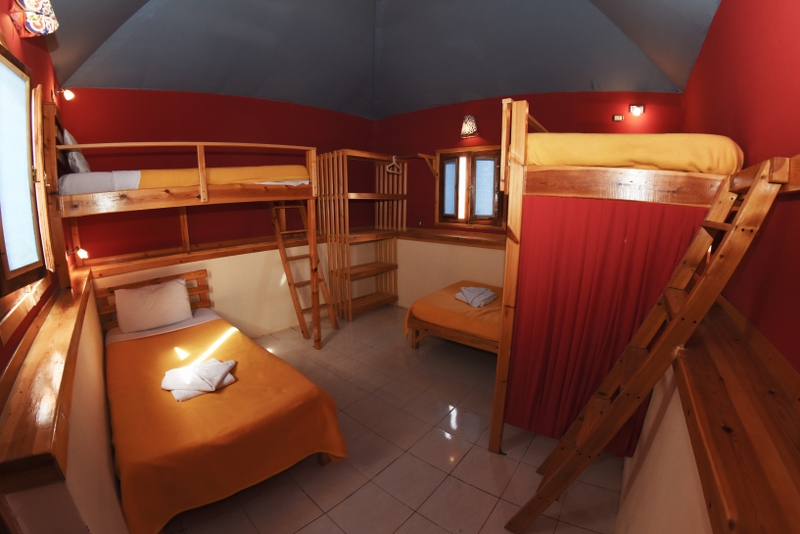
Deluxe Chalets are only suitable for 2 guests. Fully air conditioned rooms with private bathroom and other facilities.
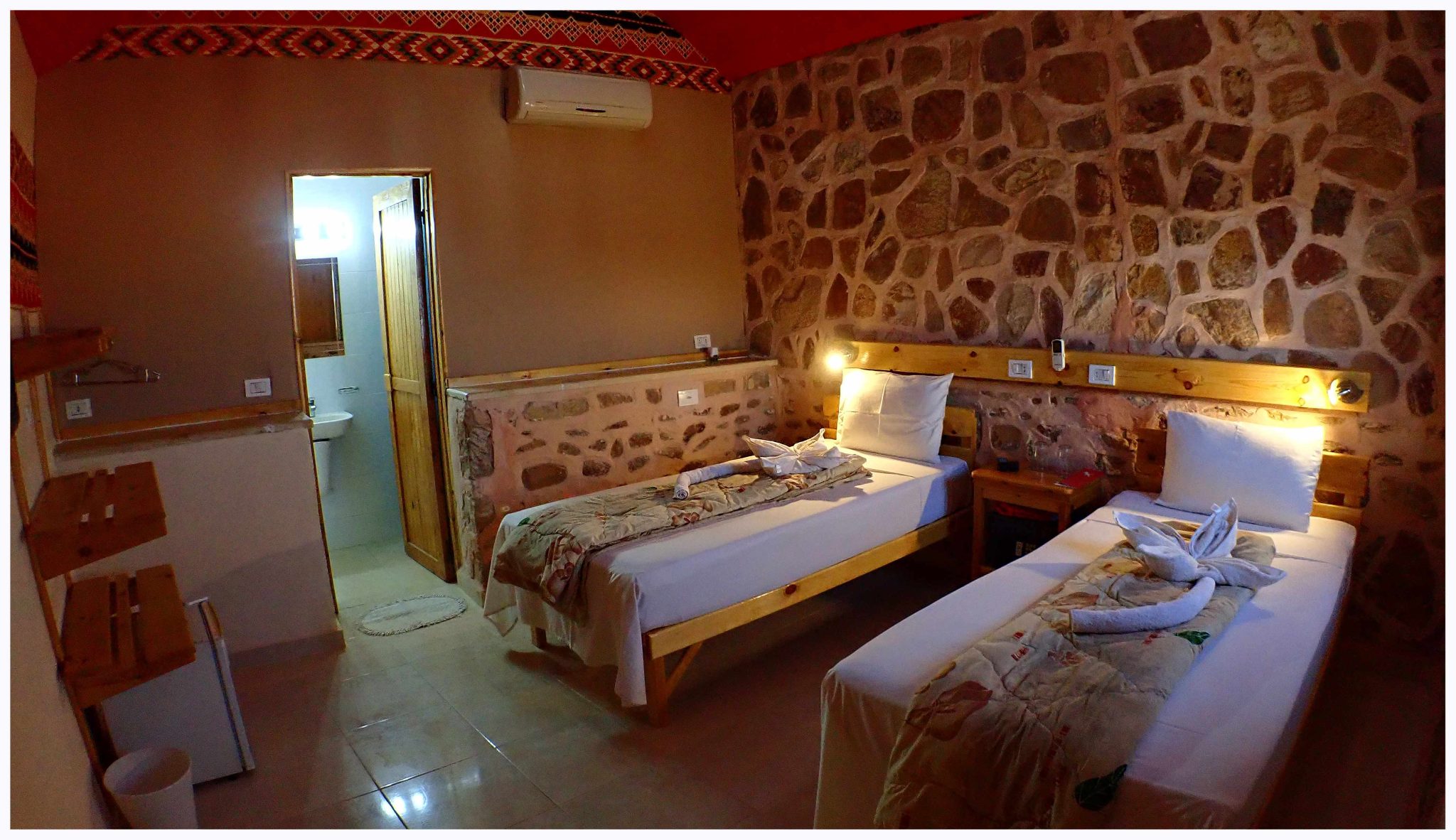
Boutique Rooms are available for families of up to 5.
Individual bespoke rooms fully air conditioned with private bathroom and other facilities.
Eco Huts: £675 per adult / £425 per child / Under 8 FREE of charge
Deluxe Chalet: £830 per adult / £505 per child / Under 8 FREE of charge
Boutique Room: £925 per adult / £550 per child / Under 8 FREE of charge
BOOK NOW: INFO@PHARAOHDIVECLUB.COM / TEL: +44 7598 329059 or +20 100 6822000
This is a truly unique opportunity to have a Family Desert Adventure totally away from it all! You will be based at the remote Roots Red Sea on the coast of the Egyptian Eastern Desert, 140km south of Hurghada city.

Red Sea Splash main focus is Snorkelling & Scuba Diving but that’s not all, we provide a rounded week of activities in support.
Pool& Field Games – Arts & Crafts
Marine Biology Workshops
Cultural Activities – Orienteering Adventures
Roots Red Sea have established strong links with the local communities of Hamerwain & El Quseir affording our guests to have a true taste of the local culture, SPLASH CAMP embraces this opportunity and bring in the local children to join in the fun with our adventure seekers.
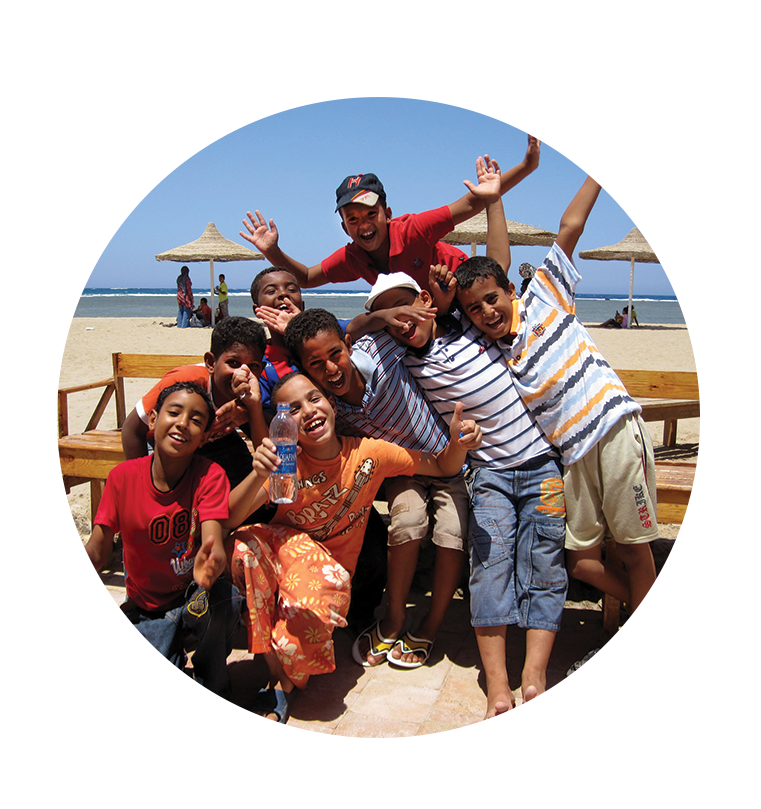
During the day, families are welcome to take part in all activities together or the kids can be left with the SPLASH CAMP team while the parents enjoy the facilities or go diving themselves!
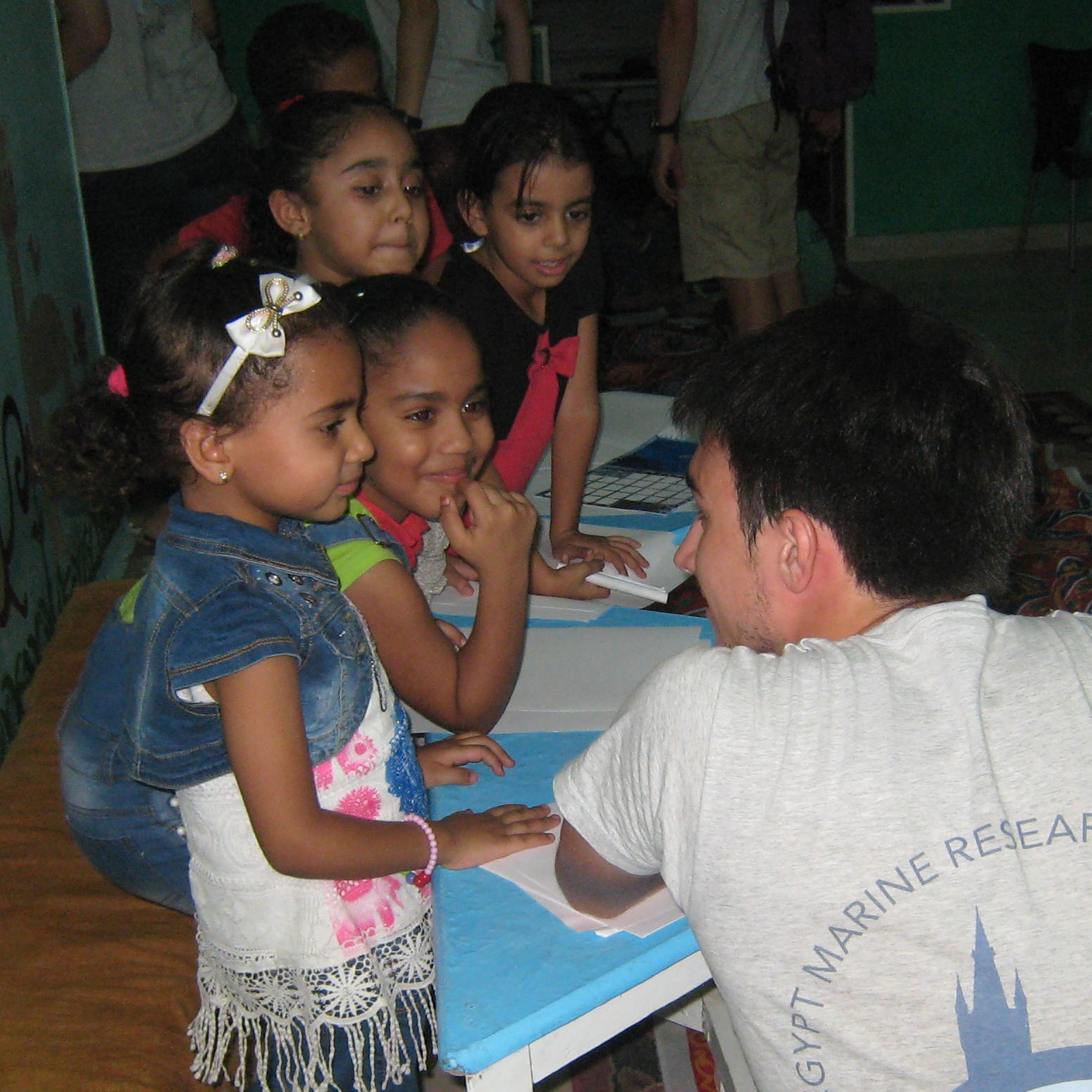
At the end of the day, its family time while the SPLASH CAMP team take a break. For those with the energy, there are family evening activities planned a few evenings.
Open Air Movie Night – Desert Star Gazing Walk & Talk
El Quseir Evening City Tour
The second week is very special, we head off on the Big Blue for a liveaboard safari around Fury Shoals.

BOOK NOW: INFO@PHARAOHDIVECLUB.COM / TEL: +44 7598 329059 or +20 100 6822000
U-8 Splash Club
Sadly we can’t offer Scuba Diving to the Splash Club but we can have lots of fun Snorkelling & Free Diving!
Splash Club includes:
Certified Snorkel Course – Marine ID Games – Intro to Free Diving
Arts & Craft Sessions – Adventure trails – Cultural Playtime – Pool Games

U-12 Explorer Club
In addition to an exciting snorkelling and Free Diving Programme in the Splash Club we can take you under the water on SCUBA to a whole new world of fun and wonder. If you are under 10 your first breath under water will be as a Bubblemaker and continue with daily Seal Team Missions. From 10 we will complete a Discover Scuba Diving experience in the amazing Red Sea. Alternatively we offer a full junior certification programme to become an international qualified Scuba Diver.

U-16 Adventurer Club
For qualified Scuba Divers regardless of age it’s the Adventurer Club and exploration of the local reefs and marine life. There will be 2 dives every day with the Open Ocean marine field station team who will introduce you to Red Sea marine life and workshops on marine research. Alternatively there are opportunities to continue your scuba diving certifications with our instructional team.

Parents are welcome to join the club activities and join the courses.
BOOK NOW: INFO@PHARAOHDIVECLUB.COM / TEL: +44 7598 329059 or +20 100 6822000
Big Blue might seem like the new kid on the block, but the team behind the highly acclaimed liveaboard is far from that. They have been running Red Sea safaris since the late 1980’s and were in fact part of the early pioneers who ventured out to the unknown on vessels that in today’s world, really shouldn’t have left the harbour! It’s that experience and the years of operating the award-winning Roots Red Sea resort which truly set Big Blue apart from the crowd!
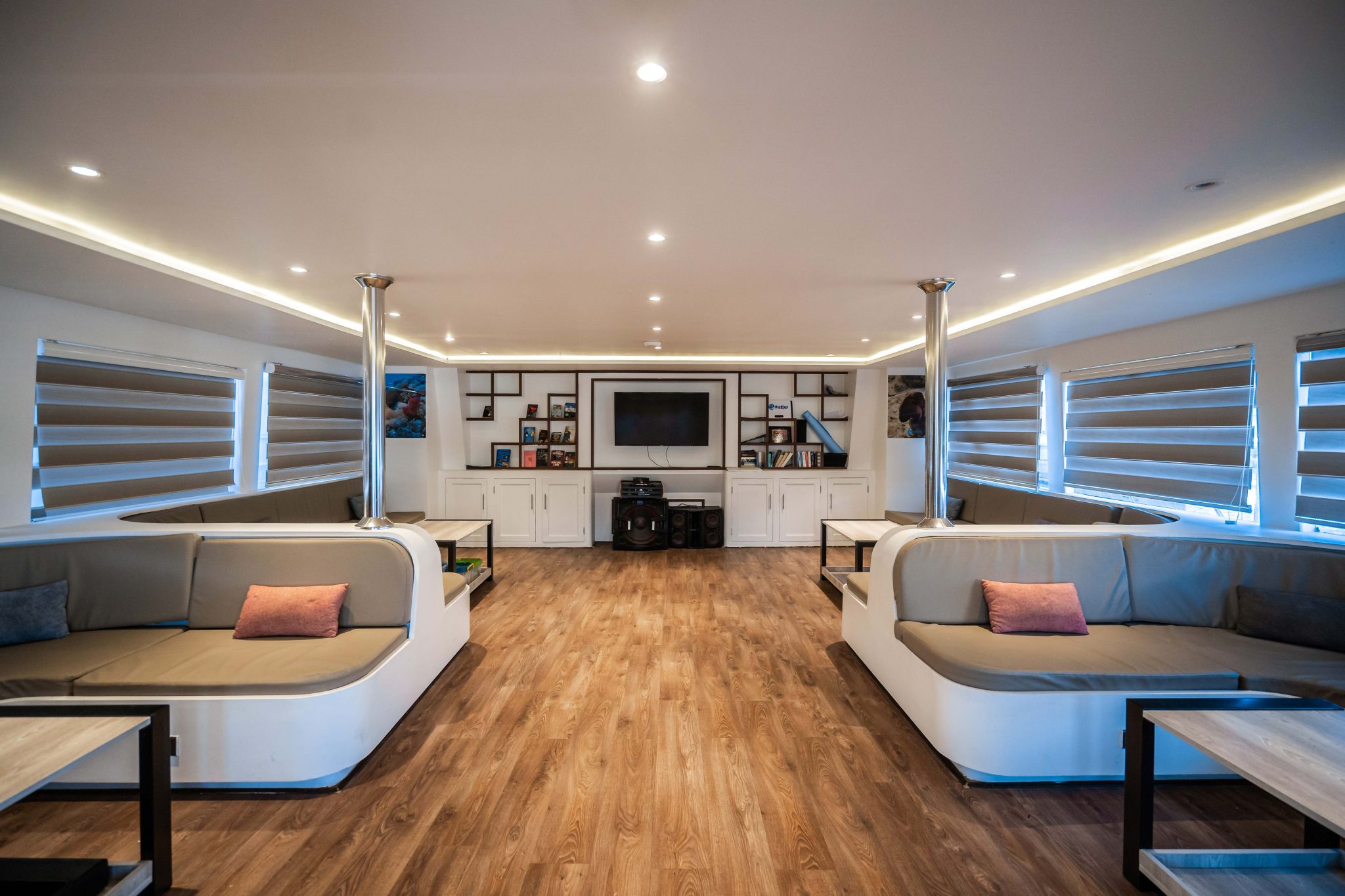
Large lounge area, spacious sun deck and terrace deck.

Airy restaurant with five tables with up to six chairs per table, serving a varied and delicious menu with special dietary requirements catered for.

The spacious cabins have side by side beds and a large walk in wet bathroom.
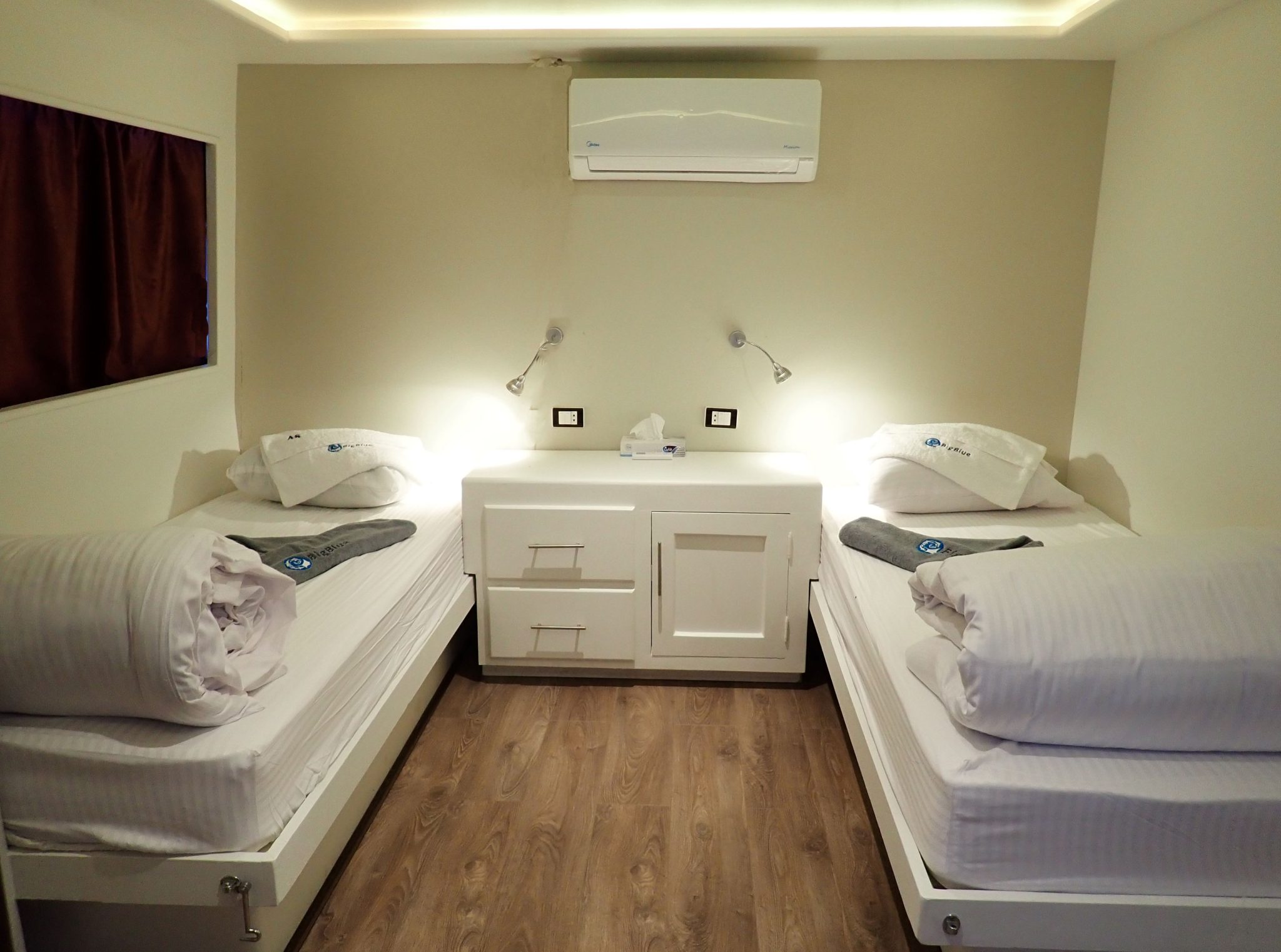
Ample dive deck for divers & snorkelers.
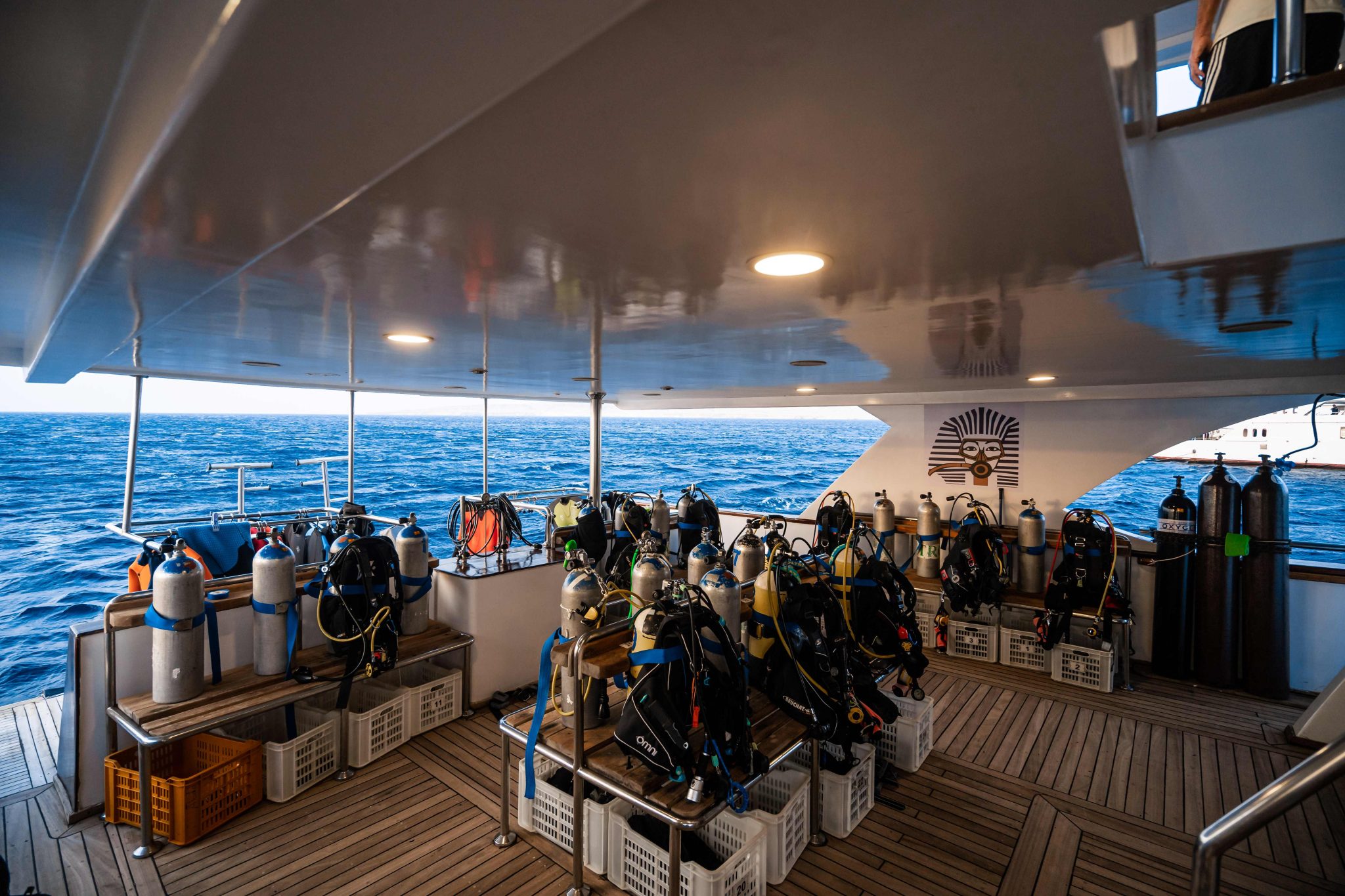
Safety is everyone’s priority, whether you are relaxing on board, swimming, snorkelling or diving.
On board Big Blue is fitted with smoke alarms, emergency lighting and a fire alarm system. The lower corridor has a full-size door fire exit at the bow and open stairs to the stern. There are evacuation plans in each room along with life jackets, glass breaker tool and a fire extinguisher.
BOOK NOW: INFO@PHARAOHDIVECLUB.COM / TEL: +44 7598 329059 or +20 100 6822000
Red Sea Splash at Fury Shoals is a very rare opportunity to get involved with marine biology expedition for children and adults. Open Ocean biologists are on board to provide fascinating and entertaining facts about the marine life you will see. The team will provide workshops on marine life identification and survey methods both of which, should you wish, you will have the chance to put into practice during your safari.

The week is open to snorkelers, scuba divers and non divers too!
Fury shoals is perfect for first time mariners as it offers plenty of protection from the weather.
We board at Port Ghaleb on Saturday evening and prepare to set sail early on Sunday morning.
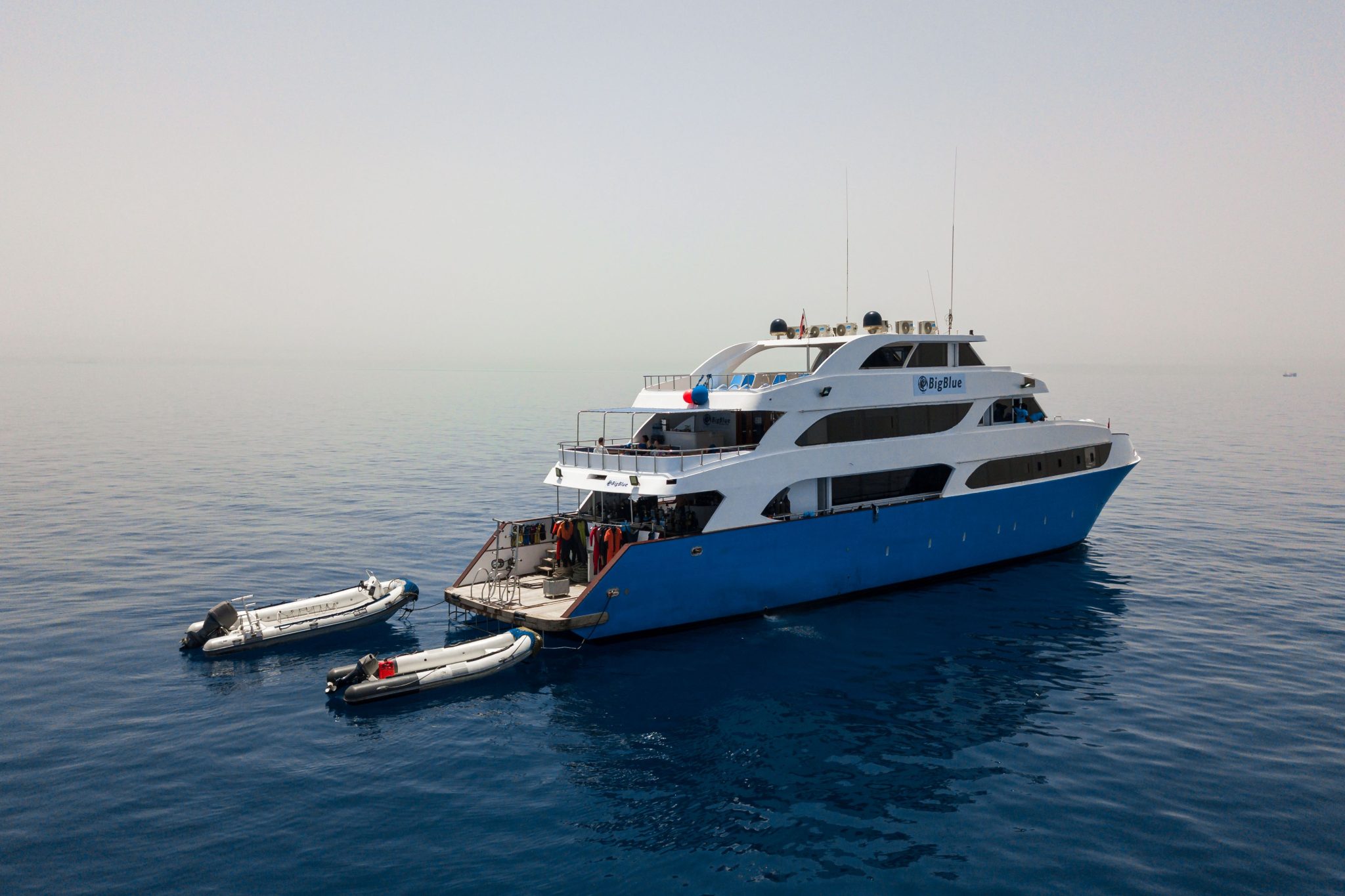
Heading south, our first day will be diving the reefs of Abu Dabbab before sailing overnight to reach our ultimate destination the Fury Shoals.
Here we will spend four days swimming, snorkelling and scuba diving amazing reefs. This includes guaranteed DOLPHIN encounters at Sataya Reef! After the last dive we haul anchor and head back to Abu Dabbab for our final two dives before disembarking our boat BIG BLUE.

Camp Extension Cost*
Adult £650 per adult
Under 16 £350 per child
BOOK NOW: INFO@PHARAOHDIVECLUB.COM / TEL: +44 7598 329059 or +20 100 6822000
FURTHER INFORMATION – INFO@PHARAOHDIVECLUB.COM
TEL: +44 7598 329059 or +20 100 6822000
Blogs
Meet Pure Dive Resort: Your Gateway to Unforgettable Diving in Bali, Indonesia

If you’re passionate about the underwater world, listen up! We’ve got an incredible opportunity for you to experience the vibrant reefs and majestic marine life of Nusa Penida, Bali, Indonesia.

info@purediveresort.com / +62 811 3999852 / www.purediveresort.com
Pure Dive Resort isn’t just another dive centre; it’s a team of experts dedicated to providing world-class scuba diving and freediving adventures around Nusa Penida, Lembongan, Ceningan, and even Bali.

info@purediveresort.com / +62 811 3999852 / www.purediveresort.com
Whether you’re a seasoned diver or completely new to the sport, Pure Dive Resort has something for you:
For certified Divers: Discover stunning dive sites, encounter manta rays, seasonal mola-mola (sunfish), and a dazzling array of marine life.
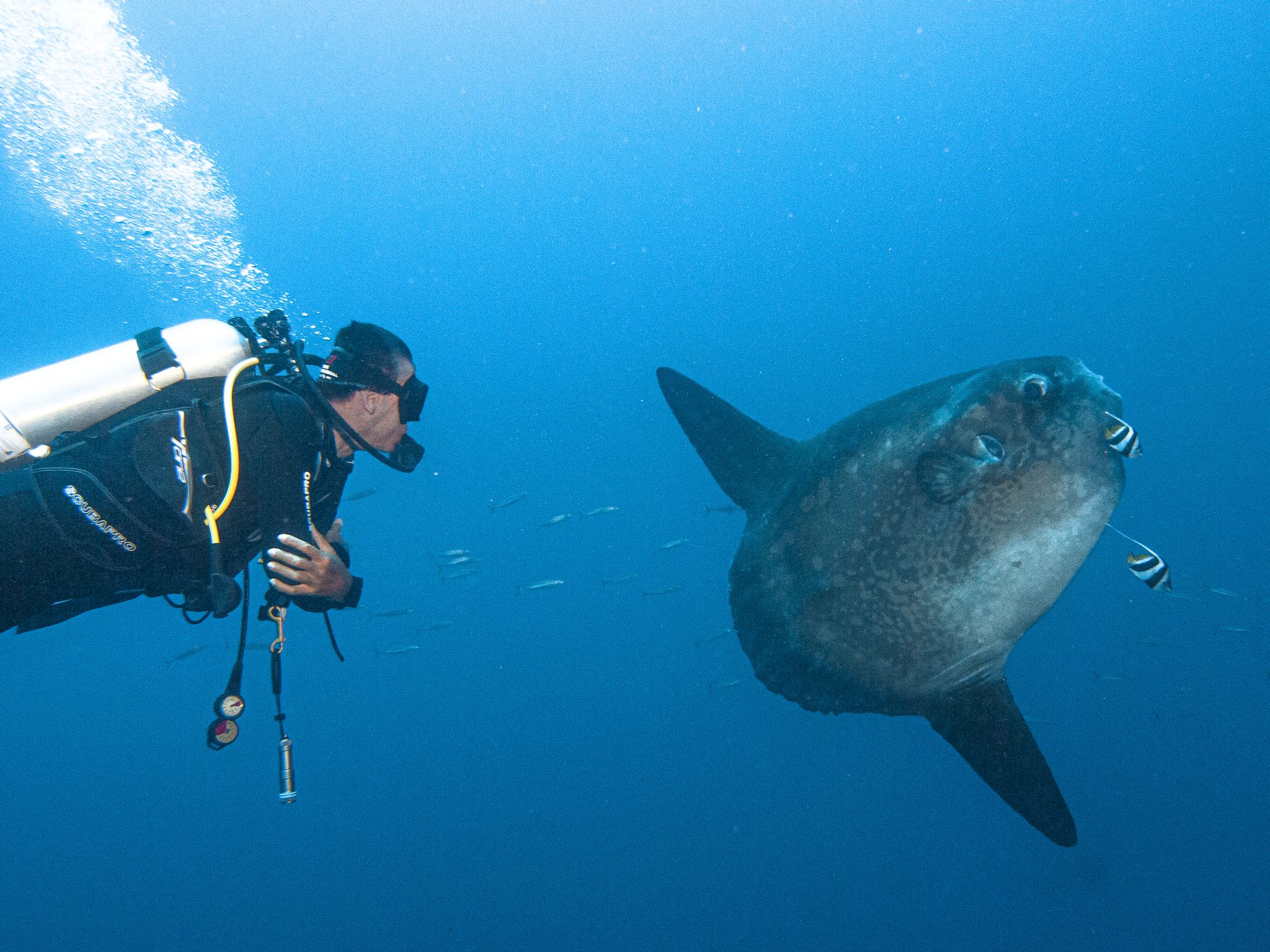
For beginners: Embark on your scuba journey with beginner programs like Try Scuba and Basic Diver, Open Water and Advanced certifications.

Freedivers: Explore the depths on a single breath with guided freediving experiences and courses.

Exclusive Scubaverse Offer: Save on Your Next Adventure
As a valued Scubaverse follower, you get an exclusive 10% discount on any Dive & Stay or Learn & Stay package booked at Pure Dive Resort for 2024. Dive into the crystal-clear waters, explore breath-taking reefs, and create unforgettable memories in this diver’s paradise.
Visit https://www.purediveresort.com/package-offers/ to explore amazing packages and claim your discount with the code: SCUBAVERSE10
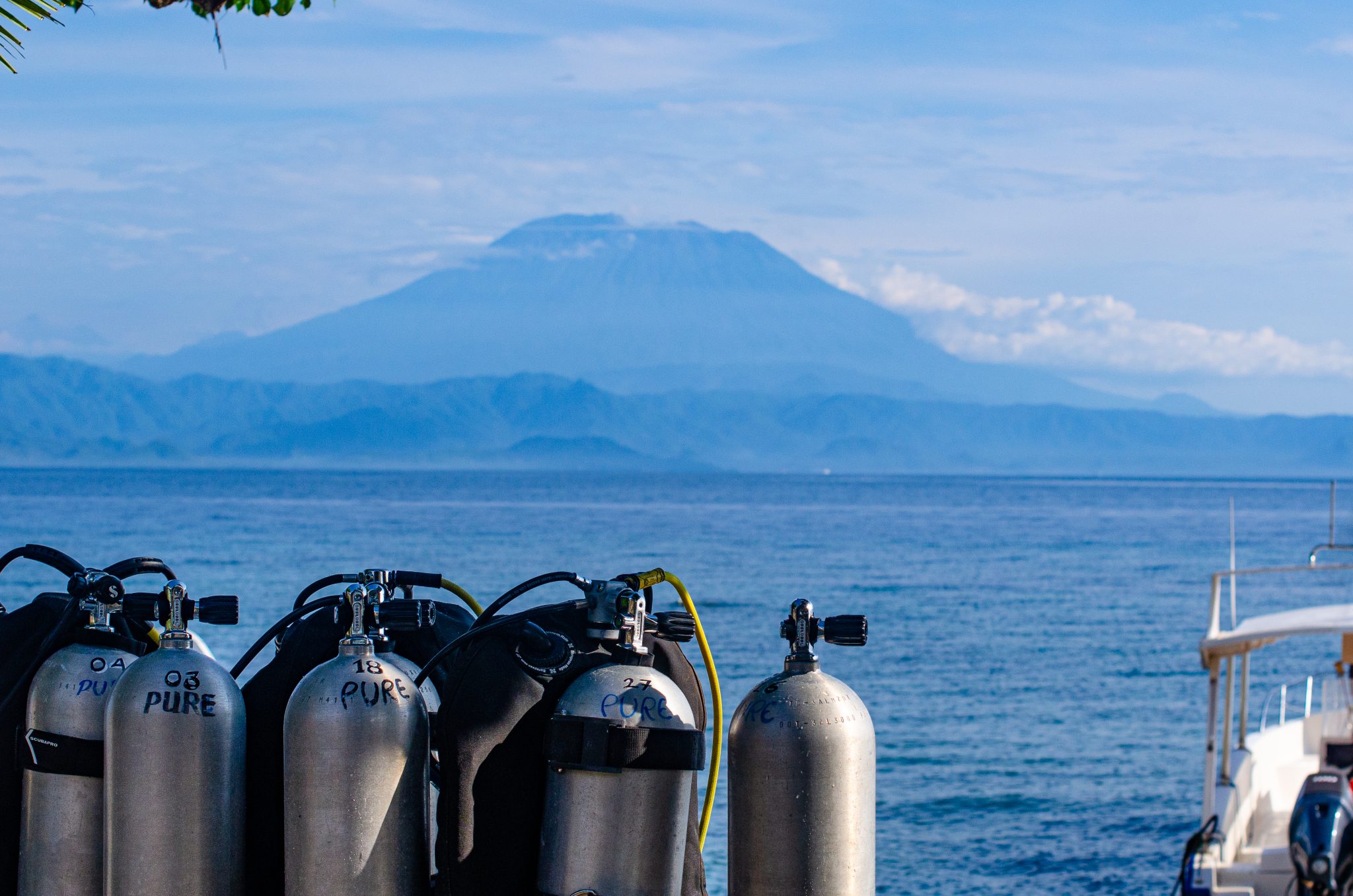
info@purediveresort.com / +62 811 3999852 / www.purediveresort.com
Ready to make a splash?
See you in Nusa Penida!
-

 News3 months ago
News3 months agoHone your underwater photography skills with Alphamarine Photography at Red Sea Diving Safari in March
-

 News2 months ago
News2 months agoCapturing Critters in Lembeh Underwater Photography Workshop 2024: Event Roundup
-

 Marine Life & Conservation Blogs2 months ago
Marine Life & Conservation Blogs2 months agoCreature Feature: Swell Sharks
-

 Blogs2 months ago
Blogs2 months agoMurex Resorts: Passport to Paradise!
-

 Blogs2 months ago
Blogs2 months agoDiver Discovering Whale Skeletons Beneath Ice Judged World’s Best Underwater Photograph
-

 Gear News3 months ago
Gear News3 months agoBare X-Mission Drysuit: Ideal for Both Technical and Recreational Divers
-

 Gear Reviews2 months ago
Gear Reviews2 months agoGear Review: Oceanic+ Dive Housing for iPhone
-

 Marine Life & Conservation2 months ago
Marine Life & Conservation2 months agoSave the Manatee Club launches brand new webcams at Silver Springs State Park, Florida



